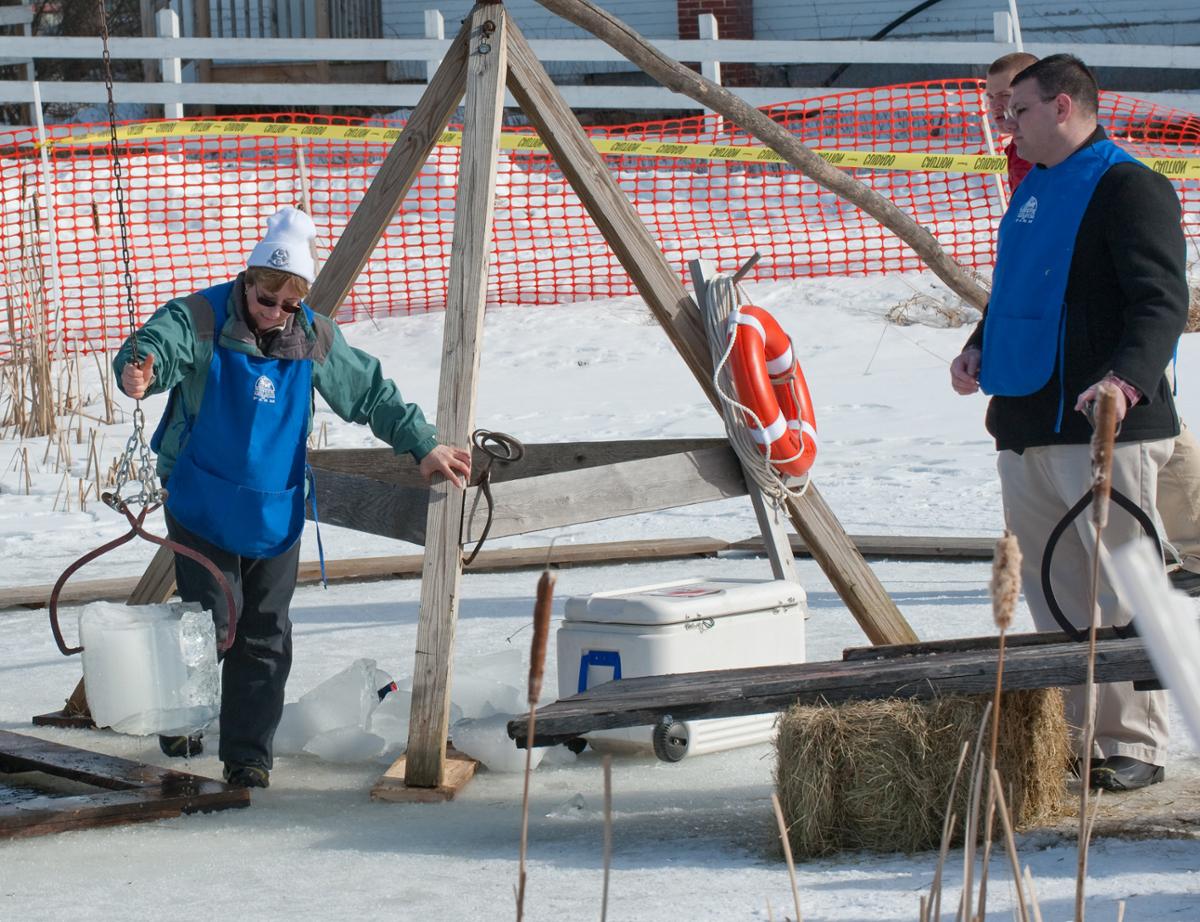Have you ever wondered how people got ice before they had refrigerators?
For thousands of years people have been finding creative ways to collect and store ice, even when it’s hot out. You can harvest it off mountains where it’s frozen at high altitudes, or even in the desert where water freezes overnight.
People would take this ice, pack it together as densely as possible to insulate it from the heat, then store it in ice houses: subterranean structures that kept it dark and cool. In ancient Persia, ice was stored in a yakhchāl: a large underground storage chamber with a tall conical roof that allowed warm air to rise and escape out the top. Back then, year-round ice was a luxury good for the wealthy. It was mostly used to make desserts and iced drinks. It wasn’t until the nineteenth century that ice became an industry.
In the 1800s, people began harvesting ice in huge blocks cut from lakes and ponds in New England then shipping it all over the world by barge or railroad. By the 1860s, access to ice transformed the way meat and produce were stored and transported in the United States.
Ice entered the American household shortly after ice became an industry. You’ve probably heard someone call a refrigerator an “ice box.” Before electric refrigeration was possible, that’s what people had: boxes in their home, often made of wood and lined with tin or zinc, with a block of ice to keep the items inside cold. The first modern electric household refrigerator wasn’t sold until 1927.
Who knew the history of ice was so cool?










